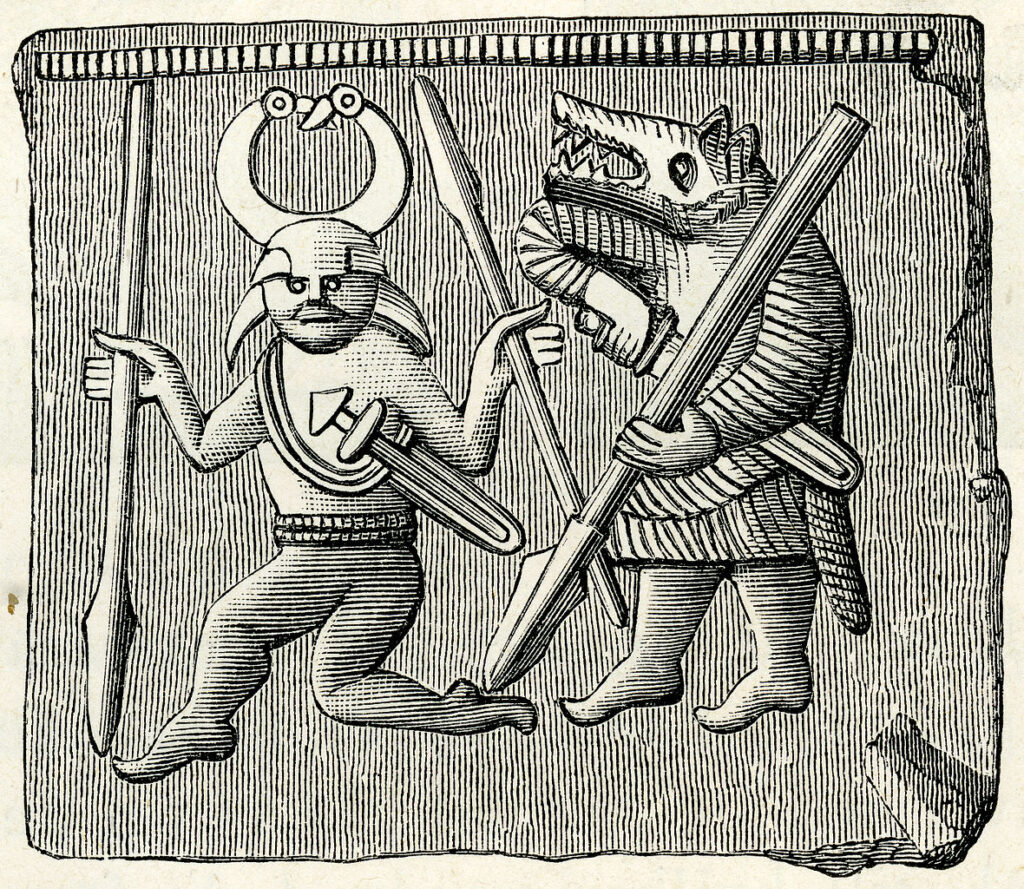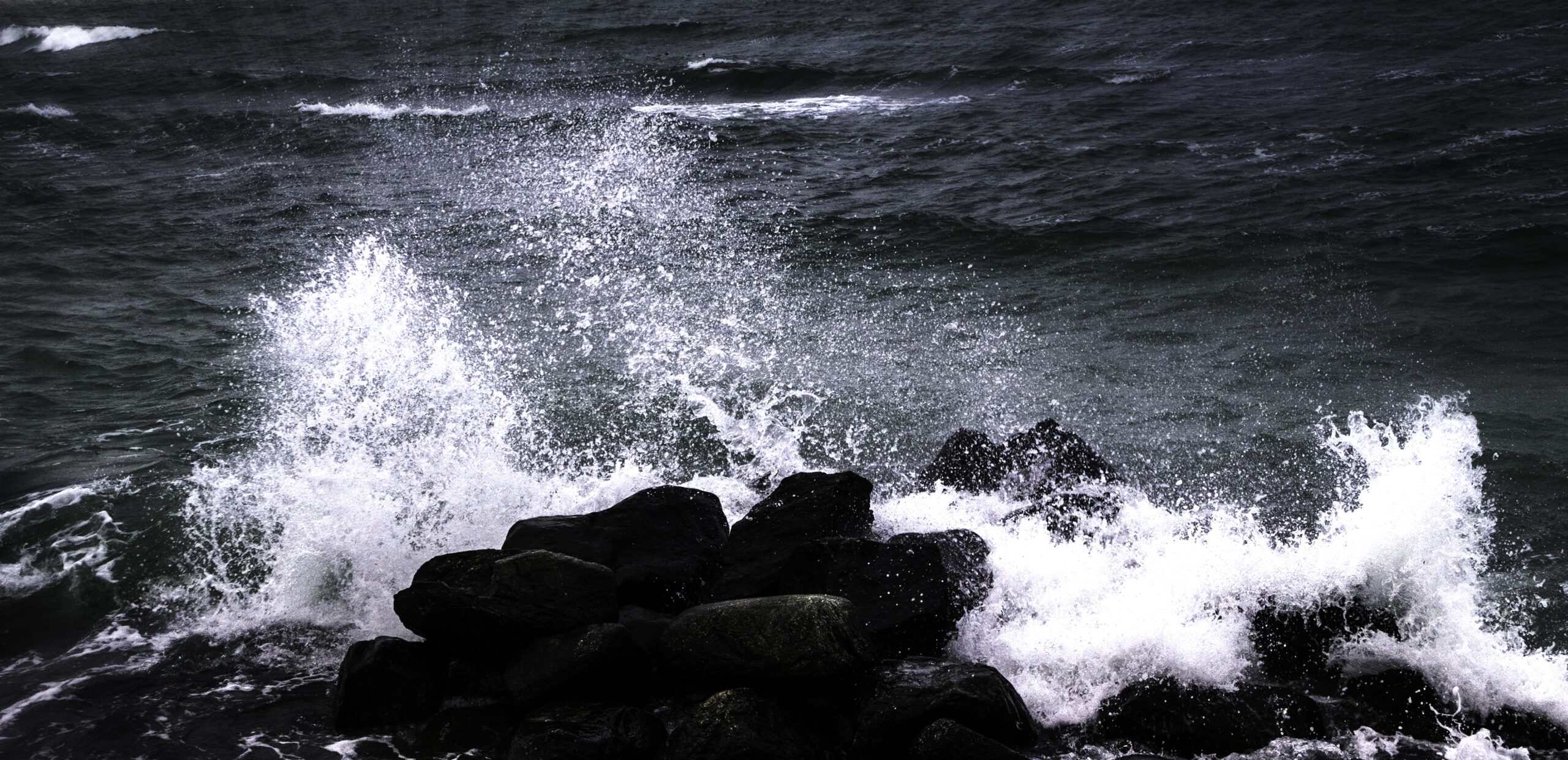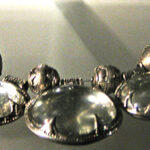NOTE: Beware of spoilers!
Historical dramas have always been immensely popular media: even before the rise of cinema, histories and legends of ancient days have been popular forms of entertainment, from the world of the Norse sagas to Shakespeare. And little wonder, for they allow us a real chance to escape our own world into a completely different time for a few hours, indulging that exploratory human spirit. Equally, it is important to remember that these do scratch the same itch as fantasy in many ways, and so historical dramas are rarely (if ever) a completely accurate reconstruction of past times, people, or events. Even with this in mind, it can be challenging for archaeologists and historians to watch many of these series as they all take varying degrees of artistic license with the historical record.
Vikings have always been popular fodder for historical drama, and the past decade has seen a boom in Viking Age entertainment, from movies to TV to video games. Now, many of these productions are very well-made, but in the historical department, they have been a mixed bag—each has its own high points and low points, and some do better than others. The Vikings are a culture that have always been heavily mythologised, and most modern depictions of the Viking Age tend to fall into this tradition. While most do show at least some effort at research and historicity, they are also largely fantastical, remaking the Viking Age in the modern conception of whoever is running the show.
This brings us to The Northman, directed by Robert Eggers and penned by Eggers and Sjón, the latest edition to the modern Viking canon. This movie has distinguished itself from many of its contemporaries with one standout factor: this is a film that appears to have had historical accuracy as its primary guiding principle, even when this means sacrificing popular images or myths of the Vikings, or when it comes at the cost of horrifying our modern sensibilities. Experts in archaeology, folklore, and history all consulted for the film and the filmmakers appear to have actually listened, which has resulted in a movie that is intense, often uncomfortable, and completely alien in many ways.
The goal of this article is not so much to review The Northman on its artistic merits (though those are considerable), but rather to discuss the film’s commitment to historicity—and what consequences that has for us, as viewers.
The Plot
895 AD. King Aurvandil (Ethan Hawke) has returned from a Viking expedition to his home in Hrafnsey (location uncertain), where he is greeted by his admiring son Amleth (Oscar Novak), his queen Gudrún (Nicole Kidman), and his brother Fjölnir (Claes Bang). Aurvandil has made the decision that it is time to properly prepare Amleth to inherit his kingdom, and to this end, he has his son initiated into what appears to be an Odinic cult in a hallucinogenic subterranean ritual involving snarling and snapping like wolves, but proving his status as a man, not beast.
Father and son emerge from Heimer’s temple with a sense that the future looks bright—but within a minute Aurvandil is dead. Fjölnir has ambushed the pair and, after having Aurvandil shot and speared, personally beheads him. Amleth only barely manages to escape the same fate, fleeing through the town which is in the midst of a very hostile takeover by Fjölnir’s loyal forces. Amleth manages to escape on a boat, vowing to avenge his father, rescue his mother, and kill his uncle.
Many years later, Amleth (now Alexander Skarsgård) is all grown up, and joined a Viking warband as an ulfheðinn—a class of elite warrior similar to the more famous berserkir. Amleth’s warband carries out a vicious raid against a Slavic village, and after having slaughtered, torched, or subjugated all its inhabitants, the Vikings settle in for the evening. Wandering the wreckage, Amleth stumbles upon a local temple where a vision of a seeress (Björk) predicts his imminent vengeance on Fjölnir, now living as an exile in Iceland. Instead of carrying on with his band, Amleth disguises himself as a slave taken captive in the raid, and stows away on a boat bound for Iceland, alongside a Slavic woman named Olga (Anya Taylor-Joy), who becomes both his lover and his partner-in-crime.
Fjölnir is now chieftain of a small farming settlement, with Gudrún as his wife. Keeping his identity secret, Amleth manages to gain some rank among the enslaved community. One night, he slips the settlement and finds his way to a cave in the landscape, where a male seer (or “He-Witch”; Ingvar Eggert Sigurðsson) produces tells him that to take his revenge, he must break into an old burial mound to retrieve the ancient sword Draugr, with which he is fated to slay Fjölnir in a “burning lake”.
I won’t tell you the rest of the story (but there are still some spoilers ahead). Instead, let us take a look at how the film incorporates historical sources, folklore, and the latest archaeological findings to create a film of truly remarkable historical accuracy.
Authenticity—even when it horrifies us
Before the raid near the beginning of the film, we are treated to a scene in which Amleth and his brothers-in-arms dance around a bonfire in wolfskins, howling and snarling, while a shaman clad in a horned headdress and wielding a pair of staves oversees the entire ritual. The horned man appeared briefly in the film’s trailer and became a target for Viking enthusiasts pointing out that “actually, Vikings didn’t wear horned helmets”. And had the raiders actually gone into battle wearing horned helmets, their scorn would more likely have been justified. But not so fast: this particular scene appears to be a replication of the scene depicted on the so-called Torslunda plates from Öland, Sweden, dated to the Vendel Period (c. 550-750 AD). Though no such helmets have ever actually been found, these images are generally regarded as depicting a now-lost Odinic ritual. The Torslunda plates pre-date the Viking Age, but Viking Age finds of pendants closely resembling the horned man suggest that this particular cult was one that may have persisted for many centuries. This is imagined in the film as a pre-battle ritual to drive the ulfheðnar and berserkir—wolf and bear warriors, respectively, devoted to Odin—into their famous frenzied state (berserkrgangr). Research suggests that such warriors were used as “shock troops”, a vanguard thrown at the enemy and followed up by the main body of the force—and this is exactly what the film portrays. The next day, Amleth and his wolfskin-clad comrades initiate the raid, climbing the town palisade, killing the sentries, then throwing open the gates to allow the remaining raiders to come swarming in. The howling and snarling that Amleth and the ulfheðnar persist in throughout the battle are drawn from literary accounts of certain elite warriors, such as King Harald Fairhair’s (d. 932 AD) personal guard, who also, as it happens, were said to dress in the skins of wolves.

This early sequence is a prime example of the lengths to which The Northman goes to incorporate archaeological, literary, and mythological research—longstanding or cutting-edge—into its depiction of the Viking world. It is also a good example of what seems to have been the film’s central philosophy: it is here to make your preconceptions of the Viking world look…well, quaint. And the result is spectacular.
It isn’t simply that the filmmakers nail the major historical aspects (the type of thing that no big-budget films have any real excuse for getting wrong, but frequently do) but also that even most of the tiniest details are on point. As an example, the film taking place as it does in the 10th c. AD, no artistic flourishes are present from the Ringerike or Urnes styles of Viking artwork, which do not appear in the archaeological record until roughly 1000 AD. This is the type of small anachronism that even archaeologists would forgive—but that apparently the filmmakers would not. The film consulted primarily with three experts, each in a specific field: Neil Price (archaeology), Jóhanna Katrín Fridriksdóttir (history), and Terry Gunnell (folklore) to ensure as authentic an experience as possible as at every level. This authenticity often comes at the expense of relatability for modern audiences, but in this film that is a feature, not a flaw.
Now, I could write for ages about all the delightful historical treats the film has to offer (an incomplete list follows at the end of this piece), but more importantly, I think the strongest point for The Northman is its unflinching portrayal of a society that was in so many ways completely alien to our own. Most portrayals of the Viking Age fall short in this way, giving us instead a Norse society that largely looks like other early medieval societies, just with a different set of gods, a different paint job, and a little extra predilection for violence. But the society of Viking Age Scandinavia was not like most other European societies of the time. True, there are recognisable hallmarks of the European early medieval world—the hall, the king, the farmstead—but it was in many ways a very different world to the one that had evolved on the continent by the late 1st millennium AD. Archaeology hints at a society with a type of religious cult we cannot possibly reconstruct in full, involving shamanism, human-animal shapeshifting, blood sacrifice, and worship of some of the wildest, most liminal parts of the environment. As indicated by Old Norse literary sources, the overarching preoccupation of this cult was fate—not to say that a person had no free will, but rather that certain destinies were seen as unavoidable no matter an individual’s actions—and this is shown very clearly in the film. In fairness, the History Channel’s Vikings does dip its toes into some of these waters (something for which I think it deserves more credit than it gets), but it still makes an effort to make the Vikings, if not more palatable, at least more familiar for modern audiences.
Not so with The Northman. This is a movie that refuses to flatter our modern conceptions of a) what the Vikings were like, or b) what we want the Vikings to have been like. Even leaving aside the violence that is the hallmark of every Viking Age dramatization (although in this film, the violence is uncommonly brutal), no aspect of the society portrayed in The Northman would pass modern standards.
That these are unapologetic slavers is established within minutes, when the “heroic” Aurvandil returns with a chain gang of human cargo in tow—and slavery remains a constant from this point on. On Fjölnir’s estate, all slaves are routinely verbally and physically abused, the female ones sexually as well. Some slaves are butchered for religious ritual, others simply to make a point. And, it bears mentioning, that the slaver raid at the beginning of the film is an experience in unmitigated horror—a far cry from the sanitised, romanticised view of the heroic Viking warrior that we all hold so dear.
In this regard, The Northman is both incredibly bold and uncomfortable—it is, then, the film that self-proclaimed Viking enthusiasts deserve. However, I suspect it is also likely to upset many such Viking enthusiasts. It is unlikely to please the far-right political elements that valorise the Vikings as noble heroes—but it is equally unlikely to serve some bizarre modern efforts to reinvent the Vikings as a culture that were somehow “progressive”. Instead, we see a people that are impossible to fit into our modern political persuasions at all. As it pans out, there are no heroes or villains in this piece: only characters with whom we can sympathise in certain moments, but would almost certainly recoil from were we to meet them in real life. Not because they are evil, but because they are products of an alien time and culture that we cannot fully place ourselves in. In 2022, the more predictable approach might have been to portray the society as a brutal one, but with Amleth as a man ahead of his time—the audience insert who sees the wrongs of his society by our modern conception of wrong. But Amleth is very much a man of his time. You probably won’t like him.
Robert Eggers and his co-writer Sjón, as well as the rest of the creative crew behind this film, deserve immense credit for refusing to even try making this society relatable to us. It makes us question our love for this culture, and reminds us of some of the reality that lay behind the beautiful ships and swords. For this alone, The Northman is a remarkable film. On aesthetic notes, it is also beautifully filmed, intoxicatingly atmospheric, and features a sizzling soundtrack.
Nods to Hamlet
The essential story of The Northman is derived from the account of Danish chronicler Saxo Grammaticus, who composed the quasi-historical Gesta Danorum (“Deeds of the Danes”) in the 12th c. AD. This story was also the embryo of William Shakespeare’s celebrated tragedy, Hamlet, Prince of Denmark (though the bard himself probably learned the story through an intermediate retelling).
The play is, for the most part, Shakespeare’s own creative work, diverging significantly from Saxo’s story to craft a far meatier narrative than the source material. Much the same can be said for Eggers and Sjón’s narrative, though Hamlet and The Northman both mirror and diverge from Saxo in different ways. Most obviously, The Northman takes place in Iceland, rather than Denmark, and by the time the main narrative heats up, neither Amleth nor his usurping uncle are anything close to royalty—in these regards, Hamlet stays truer to the source. Similarly, Hamlet’s feigned madness, his slaying of Polonius, and the business of Rosencrantz and Guildenstern also feature in the Gesta Danorum, but not in The Northman. But Saxo’s story is likely to derive from a 10th c. poem, placing The Northman more directly in the original’s cultural wheelhouse. The twist revelation that Gudrún secretly hated Aurvandil is also an element of Saxo’s story, absent from Hamlet. Both adaptations also diverge from Saxo’s ending, with their heroes meeting their deaths in duels rather than going on to live the long, adventurous life of Saxo’s hero.
In terms of names, Amleth is the name used by Saxo. And while Hamlet’s deceased father is also named Hamlet, Amleth’s father is named Aurvandil—Saxo has him as Horwendill. Fjölnir and Gudrún of the film correspond to Saxo’s Feng and Geruth, keeping at least the first letter intact (Gudrún actually sounds much closer Shakespeare’s Gertrude, and I can’t help thinking that was intentional).
All the same, the film does feature a number of nods to Hamlet that are sure to please thespian enthusiasts. Most obvious is Amleth’s slow revenge on Fjölnir, mirroring Hamlet’s torment of Claudius’ guilty conscience. Instead of simply killing his uncle at his first opportunity, Amleth decides to put him through psychological torture first—though, in this case, via a combination of ritualistic murders, animal magic, and psychedelics rather than theatre. When Amleth visits the He-Witch, he produces the head of Heimir the Fool (Willem Dafoe), court jester in Amleth’s childhood—Amleth beholds the head of the man with sadness, in what must be a nod to the iconic “Alas, poor Yorick”.
Historical tidbits
For the keen-eyed Viking enthusiast, The Northman has far too many treats to list them all in a single review. However, for this author, the following points stood out strongly.
- Although the seer that Amleth visits roughly halfway through the film is male, his costume prominently features the oval (“tortoise”) brooches that were diagnostically feminine in the Viking Age. This is a reference to the fact that seiðr—the magic of prophecy—was considered to be an extremely feminine art, and while women who practiced it could garner grave respect, men who practiced it were likely to be socially outcast, perhaps not even considered “real” men. Indeed, the character in The Northman lives in a cave beyond the fringes of Icelandic civilisation, and is scornfully referred to by Amleth as “witch”.
- The funeral scene appears to take most of its cues from the account of Ahmad ibn Fadlan, who witnessed a Rus’ funeral during the 10th c. AD. A young slave woman is hoisted three times above a doorframe, intoning that she sees her relatives and master calling to her from the afterlife. She is then led to the boat where she downs a horn of mead and is promptly stabbed to death by a priestess as a human sacrifice (we are spared the ordeal of watching the young woman forced to have sex with all men present, though I suspect this to be due to time constraints, rather than any squeamishness in the filmmakers). Another blood sacrifice is a horse, also attested by ibn Fadlan, though in two departures from the written account, the horse is led calmly to the funeral rather than being run to exhaustion first, and beheaded rather than “hacked to pieces”; the latter, however, may be a nod to numerous finds of decapitated horses in Icelandic graves. Finally, the dead man’s closest relative, Fjölnir, is naked for the lighting of the pyre—and yes, that detail is also in ibn Fadlan’s account.
- Amleth communes with wolves in his role as an ulfheðinn, but on Iceland there have never been wolves. The Arctic fox is the only mammal that lived on Iceland prior to Norse arrival—and lo and behold, in the absence of any wolves to commune with, Amleth substitutes an Arctic fox when he resorts to canine trickery. This is an ecological detail more than an “historical” one, but it attests to the filmmakers’ commitment to accuracy in all ways.
- Amleth’s fight with a draugr (undead wight) inside a grave barrow to win from it an ancient, magical sword is a venerated trope of saga literature, perhaps most notably in the Saga of Hervör and Heidrek. After the duel, however, the camera pans away, to reveal Amleth standing in front of the seated draugr, exactly as they were before the fight commenced. This might reference the notion in Norse folklore that the magical world is a realm somewhat distinct from our own, but also overlapping with our own, and so events can cross over between these worlds without attracting the notice of the individuals involved. Amleth’s fight with the draugr took him to a different “dimension”, after which he was promptly returned to his own.
- On that note, the sword Amleth retrieves is very distinctly “Vendel Period” rather than Viking, with gold, garnets, and a ring on its pommel. This makes it something of an anachronism, but the story does mention that this is a very ancient sword, something that may have been passed down as an heirloom for generations, ultimately finding its way to Iceland. No such swords have been found in Iceland to date, but it is not outside the realm of possibility.
The bad(?)
It would not do to be entirely uncritical, so the following points should be made:
- The horses in film are far bigger than the horses known from the Viking Age.
- The ritual that Aurvandil and Amleth engage in beneath the temple is, as far as can be told, a creative invention on the part of the writers. It fits superficially into the “wolf cult” motif and does work with the hypothesis that Old Norse religious rites were performed under the influence of drugs, but it has no specific parallel in the archaeological or historical record.
- The same, too, can be said for the final duel of the film, which (spoiler alert) takes place near the lava flows of an erupting volcano. I remain uncertain what purpose this served other than visually striking—though, to be fair, it is very definitely that.
In conclusion
Altogether, The Northman is a film that will leave probably everyone’s head spinning by the time the credits roll. I will not soon forget the complete silence in the cinema in that moment. Archaeologists and historians, surely, should be thrilled about the end result, as should anyone purporting to be a Viking enthusiast, in my view—but I suspect that many such viewers will instead be left with a sour taste in their mouths, at the discovery that they prefer the fantasy version of the Vikings to the real thing.
My hope is that The Northman will accomplish two things: a) prove to Hollywood that it is possible to make a gripping, compelling historical drama without sacrificing historical accuracy, and b) make people reflect seriously on their enthusiasm for the Vikings as a people. This is not to say they renounce their interest entirely—obviously, our interest in the Viking Age is a large part of Scandinavian Archaeology’s reason to exist. It is an interesting phenomenon to study. But films like this should give pause to those who want to romanticise the Vikings or overlook their atrocities, or to remake them in our image. This is not our world, and you would not like it there.
Final grade: A+
Cover image: Christopher Nichols.
Social media image: Wikimedia Commons.
About the author
Archaeologist with a Bachelor of Arts from Simon Fraser University (Vancouver, Canada) and a Master of Arts from Uppsala University (Uppsala, Sweden). My specialisation lies in bioarchaeology broadly, with a primary focus on mammalian zooarchaeology, and a special interest in the Late Iron Age of Scandinavia (though you can occasionally catch me sniffing around Egypt as well).
In my Master research I conducted an osteological analysis of domestic dog remains from Valsgärde cemetery, Sweden. The aims were to identify the number of dogs buried at the site, reconstruct the appearance of the dogs, and identify any patterns and changes between the Vendel Period and Viking Age.
I’ve always been fascinated by the relationship between humans and animals, domestic and wild, in societies throughout the world. Through archaeology, I hope to shed light on this crucial part of our shared heritage.




Wow! Agree with your review. I feel the same way as you about the movie. I enjoyed it myself. I do Viking reenactment so I’m sure that’s why. Not your average moviegoer!
I would love to hear about your analysis on the domestic dogs. Do you have a website or somewhere you post such things?
Anyway, thanks for the honest review.
Virginia
Looking to keep updated on history. I did a degree at uni of Liverpool 2016 graduated BA honours. Then went uni of chester archaeology & Heritage Post grad certificate 2018. Loving articles